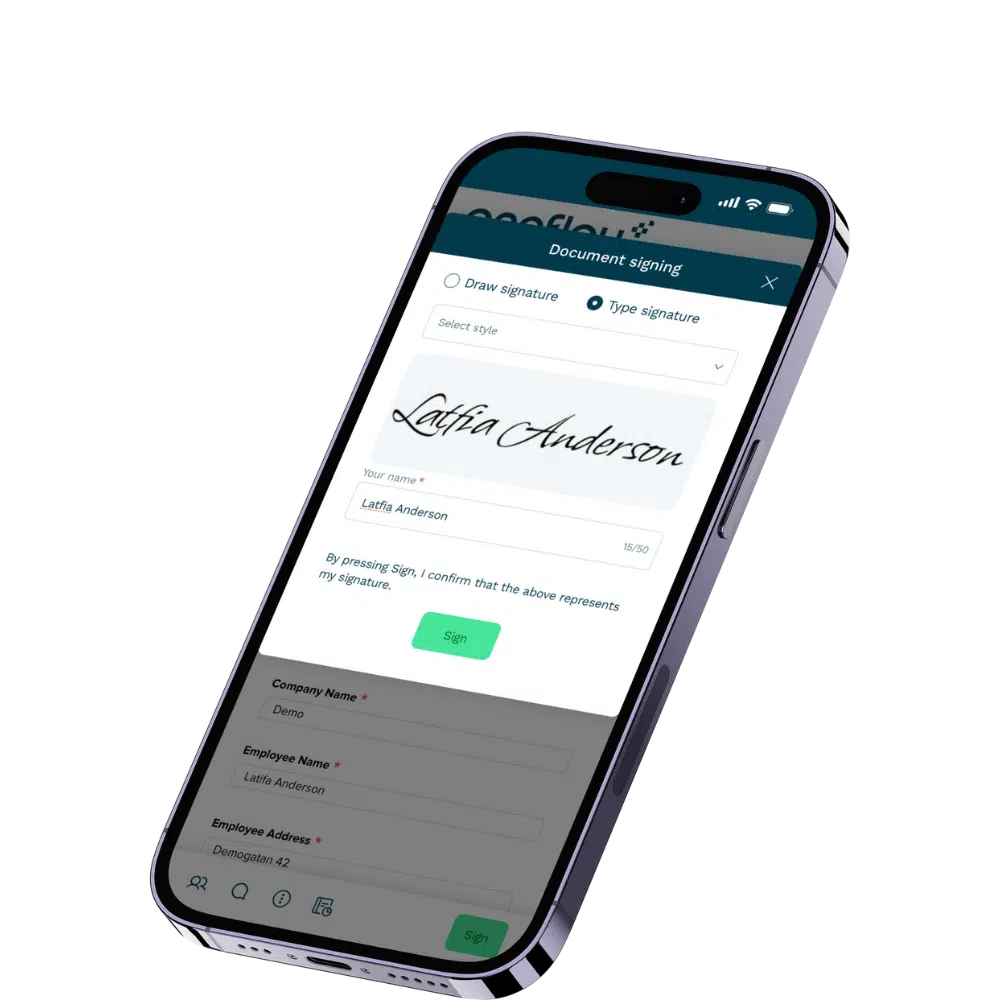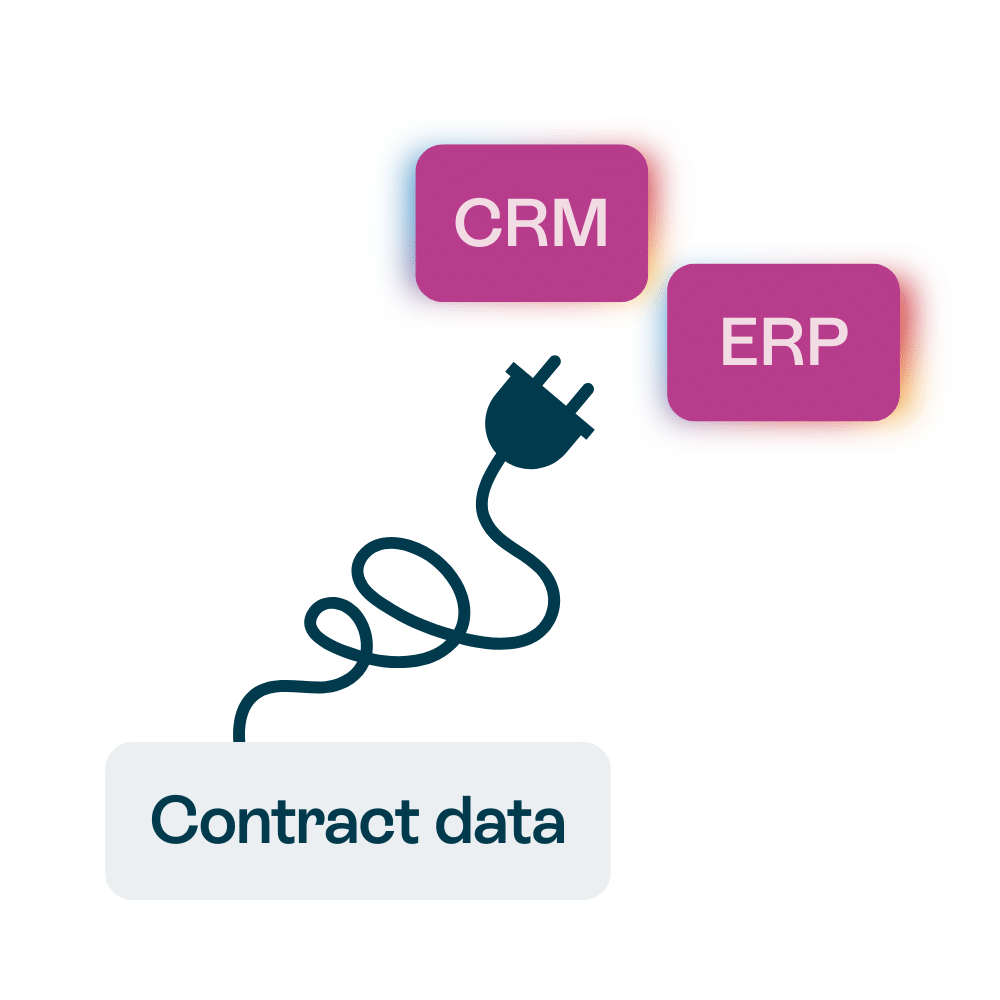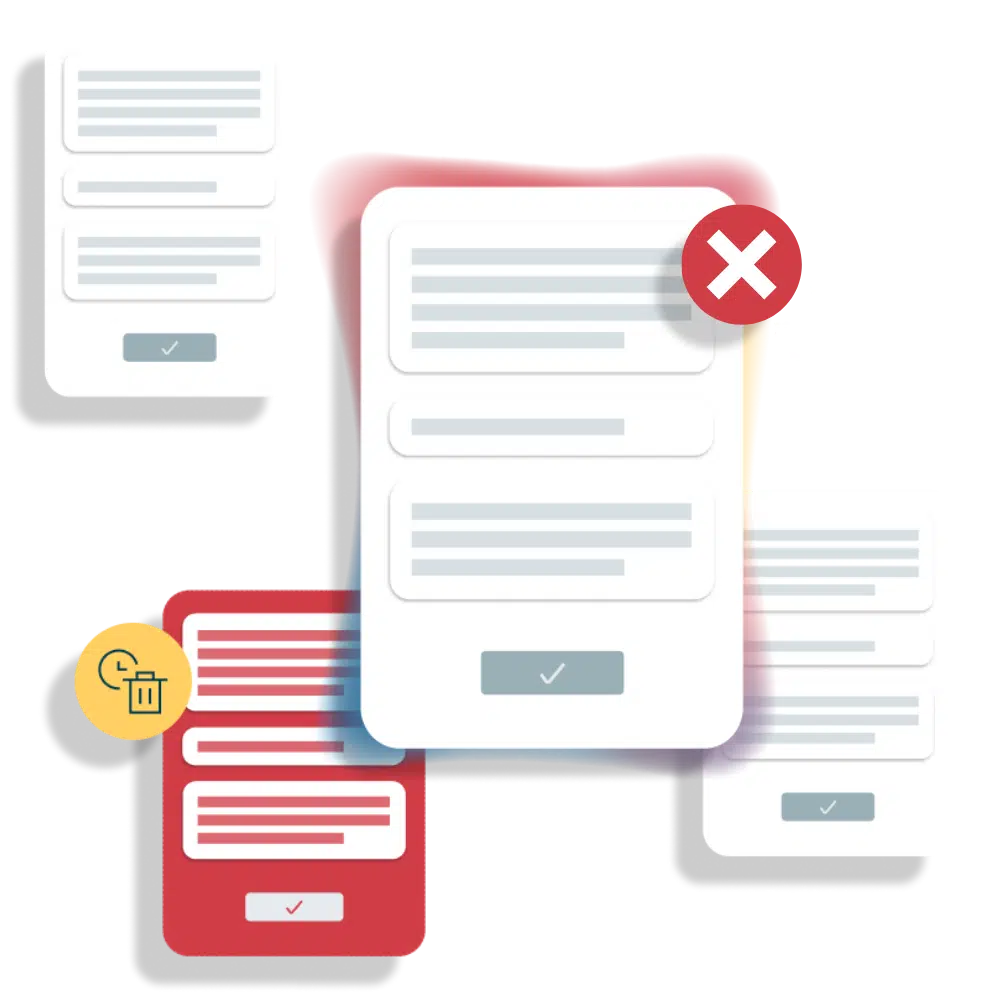
How far companies have come with digital contracts – and what’s next


Is your contract process stuck in the past?
Contracts keep businesses moving, yet few organizations have fully automated the process.
Many teams still juggle Word documents, PDFs, and email threads. Others have added
e-signatures, but still work in disconnected systems. And only a fraction are using AI to manage contracts more efficiently.
Briefly about the survey
Understand how companies manage contracts
today, the challenges that slow them down,
and the real benefits of going digital. Also
covered are key considerations for buying
contract management software and building
a strong internal business case.
The research is based on input from more
than 150 business professionals across
Europe and the US.


Key findings:
16% of organizations are still mostly manual, only 9% fully automated.
49% report frequent errors, 43% face slow contract turnaround times.
Only 1 in 10 have fully automated contracts despite widespread e-signature use
36% use AI in limited ways, 13% use it extensively.
64% report better visibility as the top benefit of digital maturity.
So, which stage of digital maturity is your company in? Let’s find out.
This report breaks down the four stages of digital maturity in contract management:
1. Manual and Messy
2. Digital but disconnected
3. Automated and integrated
4. Intelligent and predictive


What is digital maturity?
Digital maturity is the level to which a company relies on digital tools, data, and automated workflows to work faster, smarter, and with less effort.
For contracts, it’s about leaving paper and manual steps behind and moving to fully digital processes. That could mean using e-signatures, CLM software, or generating contracts from your CRM or CPQ. It can also mean using AI to review contracts, flag risks, and speed up routine tasks.
Maturity still in progress.
Most companies are still working toward digital
maturity in contract management.
16% remain mostly manual, relying on Word,
PDFs, and email threads. Almost a third (29%)
are partly digital, using e-signatures but with
disconnected systems. The biggest group (45%)
says their process is mostly automated. Just 9%
have reached full automation and intelligence.
Here’s a closer look at the four stages of digital
maturity and where companies stand today:


Stage 1:
Manual and messy – Word, PDFs, email, and shared drives
Contracts are often stored in shared drives or buried in email threads. Most teams draft them in Word or PDFs, with no clear way to track changes or identify the final version. Because everything is manual, mistakes are common.


The integration gap in contract management
Integration with business systems like CRM or ERP is rare, leaving contract data isolated. This makes it harder to keep up with progress, share insights, or automate workflows.
Other common challenges that makes things messy:
Frequent errors due to manual processes.

Slow contract processing and approvals.
Poor collaboration and alignment between teams.
Minimal ability to analyze contract performance.


The business impact?
Lost deals, higher legal and compliance risks, slower revenue, wasted time and resources, and missed opportunities for insights and automation.


Stage 2:
Digital but disconnected –
e-signature tools without contract automation
At this stage, many teams use e-signature tools, which makes signing faster. But they still draft most contracts in Word or Google Docs, with little automation and no central hub to store files.
What tools or systems
do you currently use
to create, sign and
manage contracts?
67% of companies say they use e-signature
tools, while 61% still rely on Word or
Docs for drafting.
E-signatures are common, but most
organizations still lack real automation or
a central place for contracts.


Common challenges and business impact?
Stage two is mostly similar to stage one. Signing is faster and less error-prone, but drafting still takes too long. Without a central hub to store and manage contracts, collaboration remains difficult, slowing workflows and limiting visibility.
As a result, businesses may miss out on deals, experience slower cash flow, and have a hard time tracking contract performance or spotting opportunities.


Stage 3: Automated and integrated – CLM software and CRM integration
Even though e-signatures are everywhere, only 1 in 10 companies has fully automated contracts.


Turning contracts into connected data
At this stage, some automation kicks in. 26% of teams use dedicated CLM software, which lets them connect contracts to systems like CRM, ERP, or other business tools. This makes it easier to organize contract data, track progress, and keep clear audit trails.
How integrated are your contract processes
with other systems
(e.g., CRM, CPQ, ERP)?
But lack of integration still causes
problems. 67% of companies say their
contract systems only connect in part,
24% are fully integrated, and 7% don’t
integrate at all.
How automated is
your organisation’s
Quote-to-Cash
process today?
Automation of the quote-to-cash process
is also limited. Only 9% report a fully
automated and connected process, with
the majority (77%) some (e.g.,digital quotes,
e-signature) or mostly automated
(e.g., workflows + integrated tools).


Streamlining quote-to-cash with digital solutions
Organizations rely on tools like CPQ (38%)
or Oneflow (23%) to support parts of
their quote-to-cash workflows.


How does this affect businesses?
CLM and automation help close deals faster and improve compliance and audit readiness.
A big challenge, however, is weak integration. Since few companies reach full automation, they still face delays, errors, extra manual work, and limited visibility into contracts.


Stage 4: Intelligent and predictive –
AI-powered insights
AI is starting to change how teams manage contracts. By reviewing agreements, flagging risks, suggesting templates, and catching unusual clauses, it helps reduce mistakes. AI can also predict renewals, expansions, or churn, and help automate the redlining process.
While AI is gaining
traction, it’s still not widespread:
For the question: “To what extent is your
organisation using AI in contract
management today?”
36% of organizations use AI in limited areas
like redlining or clause suggestions. 35% are
just exploring AI tools, 13% use it extensively
for tasks like analysis or renewal insigts,
and 15% haven’t started using AI at all.


How are AI-powered contracts changing business?
Predictive automation helps deals move faster and cuts down on mistakes. Teams get a clearer view of contract performance and can stay on top of compliance and risks. AI also makes audits easier by tracking changes and reducing the risks of missed obligations.
That said, we’re still at the beginning of the journey, and we’re just scratching the surface of what AI can do for contracts.


How digital maturity pays off: “Teams are saving weeks per month”


The measurable impact of digital maturity
When teams raise their digital maturity, the impact is measurable.
Automated workflows, better collaboration, and easier access to contract data not only reduce errors but also free up significant time.
Here’s how much time
teams save across the contract process:
“Digital contract maturity is saving some
teams weeks per month.”
Teams report the
biggest wins as:
Improving digital maturity doesn’t just make
processes faster, it brings real results for the
team and the business.


What’s getting in the way of digital maturity?


“Poor collaboration is a top barrier.”
Many organizations struggle to modernize their contract processes. Teams often work in silos, with legal, sales, and IT not always on the same page. Add in resistance to change, outdated tools, limited budgets, and worries about security or compliance, and progress can be slow.
Looking at over 100 responses, these common challenges stand out:
Systems that don’t integrate well.
Limited use of AI.
Not enough training or digital skills.
Resistance from leadership or teams.
Desire for more intuitive, all-in-one tools.
And this is how it’s
affecting businesses:


Collaboration gaps cost efficiency
These numbers show that having the right tools isn’t always enough. Teams need connected workflows, proper training, and alignment across departments to work efficiently. Without it, errors, delays, and missed opportunities continue to hold businesses back.


Evaluating solutions
and building
your internal business case
Organizations can level up their digital maturity by making informed buying decisions and build a business case that shows real value.
When evaluating solutions, you should prioritize:
Ease of use
Easy to learn and adopt for all teams.
Integrations
With CRM, ERP, and collaboration tools.
Compliance
Built-in security and clear audit trails.
Scalability
Adapts and grows with your business, handling new requirements and changing needs.
Measurable ROI
Demonstrable time savings, reduced errors, and faster revenue recognition.
Automation
Supports today’s needs (e-signature, templates, workflows) and is ready for AI features as they become standard.


Making the case for change
To build an effective internal business case, focus on convincing leadership and other departments by clearly showing the impact across the business.
How different teams benefit from digital contracts:
Sales: faster deal cycles and fewer lost opportunities.
Legal: lower risk, easier compliance, and less manual review work.
Finance: quicker cash flow and fewer revenue leaks.
IT: fewer fragmented tools and stronger integrations.


Bottom line?
Companies that level up their digital maturity by choosing the right contract platform don’t just adopt a tool – they make a strategic investment.
Smart buying decisions, aligned with business needs and measurable ROI, help teams work faster, reduce risk, and gain full visibility into contracts and their business.
And for our next trick…
/




